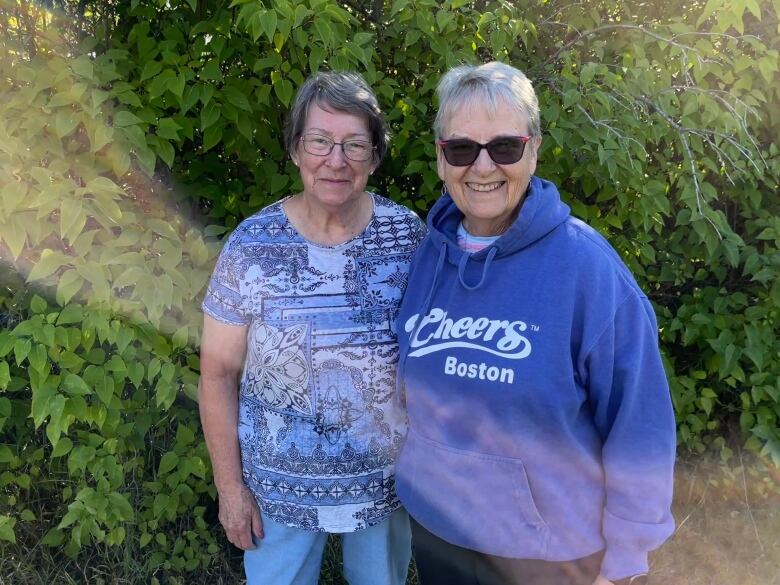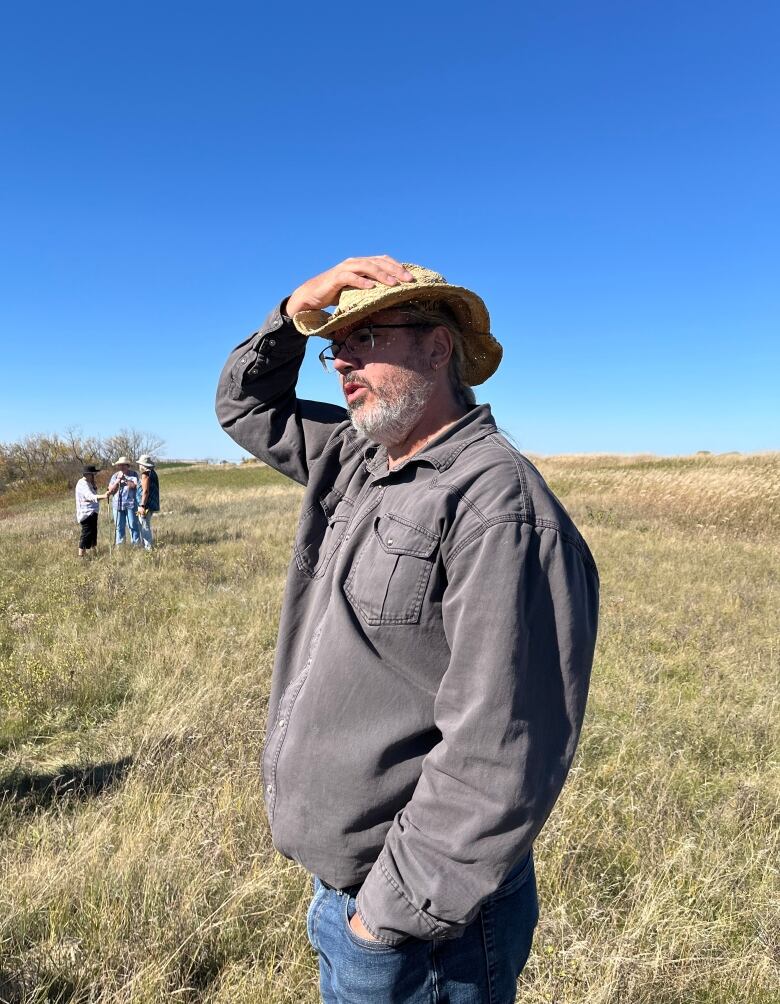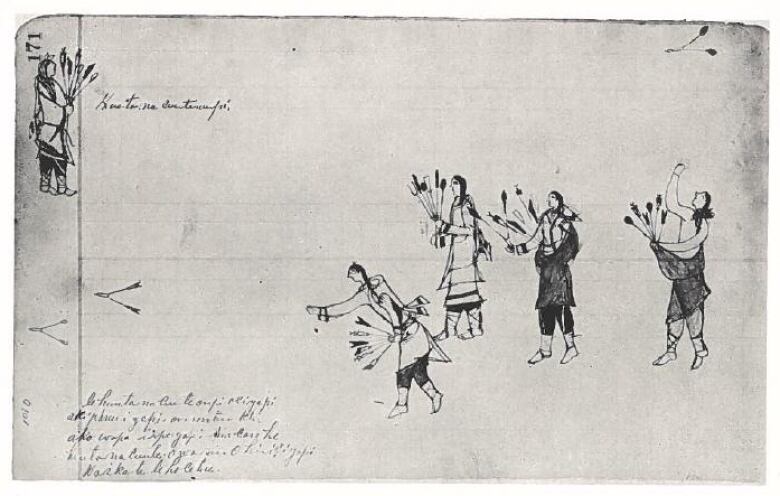Indigenous elders visit historic gathering place in Sask. for 1st time in generations
Site's name, k-k-mmawpihk, translates to 'where they used to gather'

Apiece of Prairie land, nestled just east of Last Mountain Lake in Saskatchewan, hasa rich history.
The small stretch of valley is tucked between farmland, not far from Rowan's Ravine. Sage brush, long Prairie grasses and trees, their leaves turning with the autumn weather, surround the spot. You almost can't see it until you're right at the edge.
The site was occupied from the 16th to 19th centuries by members of the Mortlach Culture, ancestors of the Nakoda and Plains Cree peoples.
Nearby farmland was homesteaded in 1907 and the valley was converted to private property.
Adele Coutts and Lorna Mackenzie now own the land their grandparents planted roots in.

The sisters, alongside archeologists and professors from Saskatchewan and Alberta, invited elders from the Touchwood Agency Tribal Council to visit the archeological site for the first time.
"It's pretty exciting, and it's certainly nice to hear the things that they have researched about this place and to meet lots of the First Nations people that are very interested to see it," Coutts said.
"I'm very glad that they're able to come back and visit their ancestral place where they harvested every summer and autumn. Just to maybe relive some of their stories they've heard in the past," Mackenzie said.
The land
Andrew Miller, a professor at First Nations University of Canada in Regina, has been researching this land alongside archeologists since 2021.
"They came to know this place as the Lake Midden or Lake Trash Heap," Miller said.
"But for the hundreds of years this place was occupied, they did not call this place the trash heap. It was a winter camp for generations."

With the help of local elders, the land known as Lake Midden was renamed.
The new name k-k-mmawpihktranslates in English to "where they used to gather."
The artifacts
Through years of archeological excavation, thousands of objects were discovered. They included bison bonesand ceramic pots that were used for storing, cooking and serving food.
University of Alberta archeologistRobert Losey said some pots still contained corn and bean residue.
"So people here are also eating crops, meaning that either they or their neighbours nearby were growing crops and then storing that for eating during the winter," he said.
It's kind of sacred being here trying to learn more about our history.- Caroline Poorman
Hundreds of arrow points were found on the land, some of them made of stone from places now known asNorth Dakota and Yellowstone National Park.
"So it's being transported, shared, passed down the line through many, many Indigenous folks, all the way from there to here," Losey said.

Losey's favourite artifactsare nearly 400 gaming pieces that were found.They are shaped similar to darts, each made froma piece of bison rib with two sticks and feathers attached to the back.
"In the game, you would fire these down a track on the snow or on the ice, and the winner was the person who threw it the furthest," Losey said.
"There are literally hundreds and hundreds of them here, meaning there were lots of people here having fun in the winter time together playing these games here.
"You get a picture of this really thriving life that was happening here starting about 500 years ago."
Losey hand-made replicas of the gaming pieces and gifted them to the elders at the site.
The impact
Elders spent an hour at the site on a windy afternoon at the end of September. Their faces lit up as they looked across the valley.
Bill Strongarm, an elder from KawacatooseFirst Nation,said this small piece of the province shows that Indigenous peoples'connection to the land has never been lost.
"Their spirit is still here, so I can feel a sense they're here looking at us. They're kind of saying welcome," he said.
Strongarm said he wasgrateful to be able to come to the site.

"You can certainly feel it in the way it looks, like, you know it's natural," said Daystar First Nation elderFreda Crowe Buffalo,comparingthe land to other sites she has visited.
Elder Caroline Poorman echoed the importance of seeing this site.
"It's kind of sacred being here trying to learn more about our history," said Poorman.
"It means a lot to carry on and to let people, our young people know that this was our life and this was our way of living."
Even Losey and Miller had never visited the spot, despite researching the artifacts found there.
"It was a bit surreal actually to have worked on material from here for almost three years and to never have actually been on there," said Losey.
Losey said archeological work in Canada is often done withoutclose co-operation or even consent from Indigenous communities.
"Archeology is trying to do better, and trying to do work on archeological materials with First Nations and for First Nations coming up with outcomes from that work that are meaningful to the community," he said.
The land near Rowan's Ravine will remain on private property, but the Elders are grateful to have been able to visit and to learn the history the experts had to share.













_(720p).jpg)


 OFFICIAL HD MUSIC VIDEO.jpg)
.jpg)



























































































